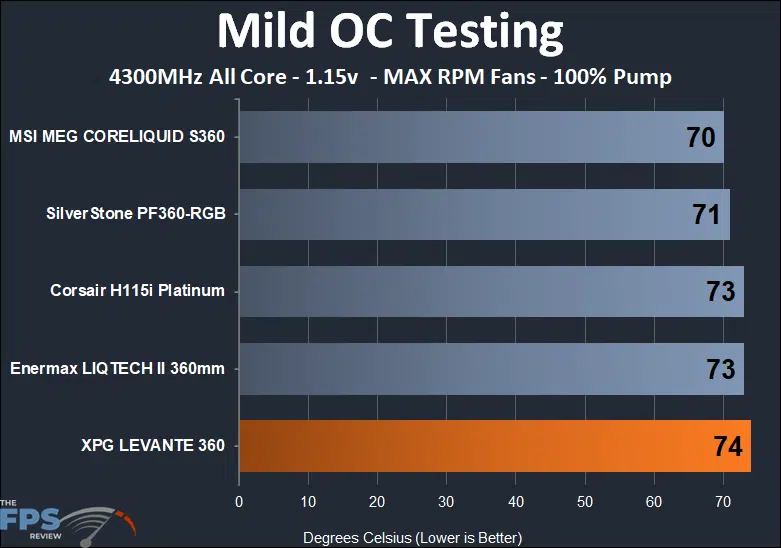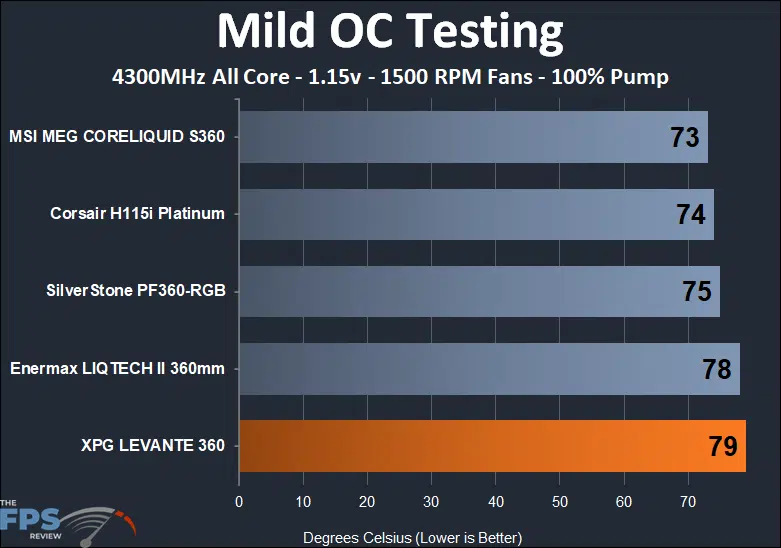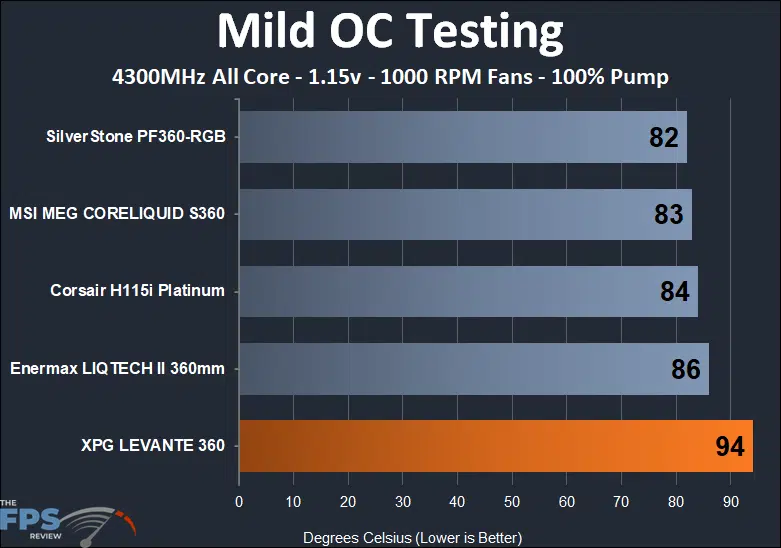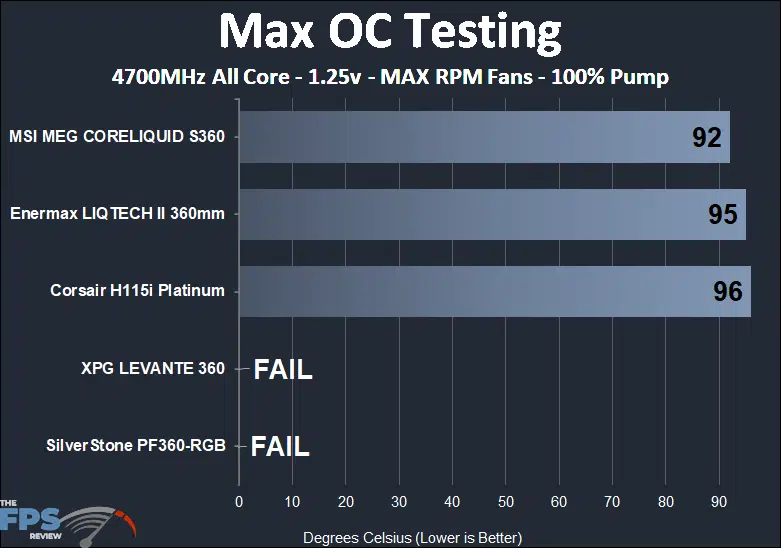Overclocked Testing
Mild OC Testing
For our Mild OC testing, we have configured our CPU to run 4300MHz on all cores, set the voltage to 1.15V, and configured memory to XMP mode. This yields an approximate power at the wall of 450w under load (a 350w differential from idle, which pulls about 100w). This results in the CPU running at 4.3GHz on all cores during the looping rounds of Cinebench R20. You can read more about this in our introduction article here.
Max Fans – 100% Pump Speed

Now with the clocks dialed up and everything running at full blast, the XPG LEVANTE 360 turns in a reasonable 74 degree Celsius performance compared to the rest of the field being slightly cooler.
1500 RPM Fans – 100% Pump Speed

Sliding down to 1500 RPM fans, the field readjusted itself some, but the XPG LEVANTE 360 remained in the caboose at 79 degrees Celsius.
1000 RPM Fans – 100% Pump Speed

Finally at 1000 RPM, the XPG LEVANTE 360 threatened to go nuclear at 94 degrees Celsius which was quite a bit warmer than the compared coolers.
Max OC Testing
For our Max OC testing, we have configured our CPU to run 4700MHz on all cores, set the voltage to 1.25V, and configured memory to XMP mode. This yields an approximate power at the wall of 600w under load (a 500w differential from idle, which pulls about 100w). This results in the CPU running at 4.7GHz on all cores during the looping rounds of Cinebench R20. The only test that was completed without throttling was the Max Fans and 100% pump speed test. You can read more about this in our introduction article here.
Max Fans – 100% Pump Speed

With our test bench maxed out, the XPG LEVANTE 360 attempted to do the needful but was unable to find success. The CPU hit its throttling limits and we called it at that point.
Now that we have seen how all of our units cool, let’s see if we can still hear!
